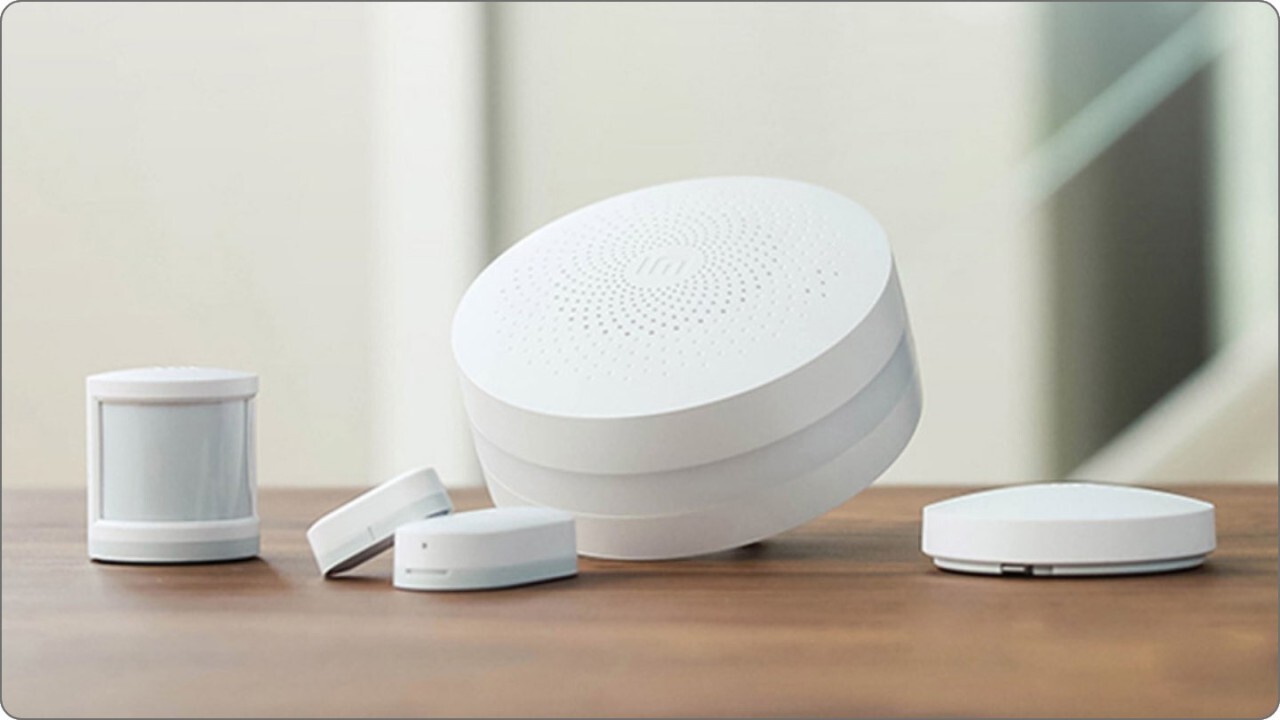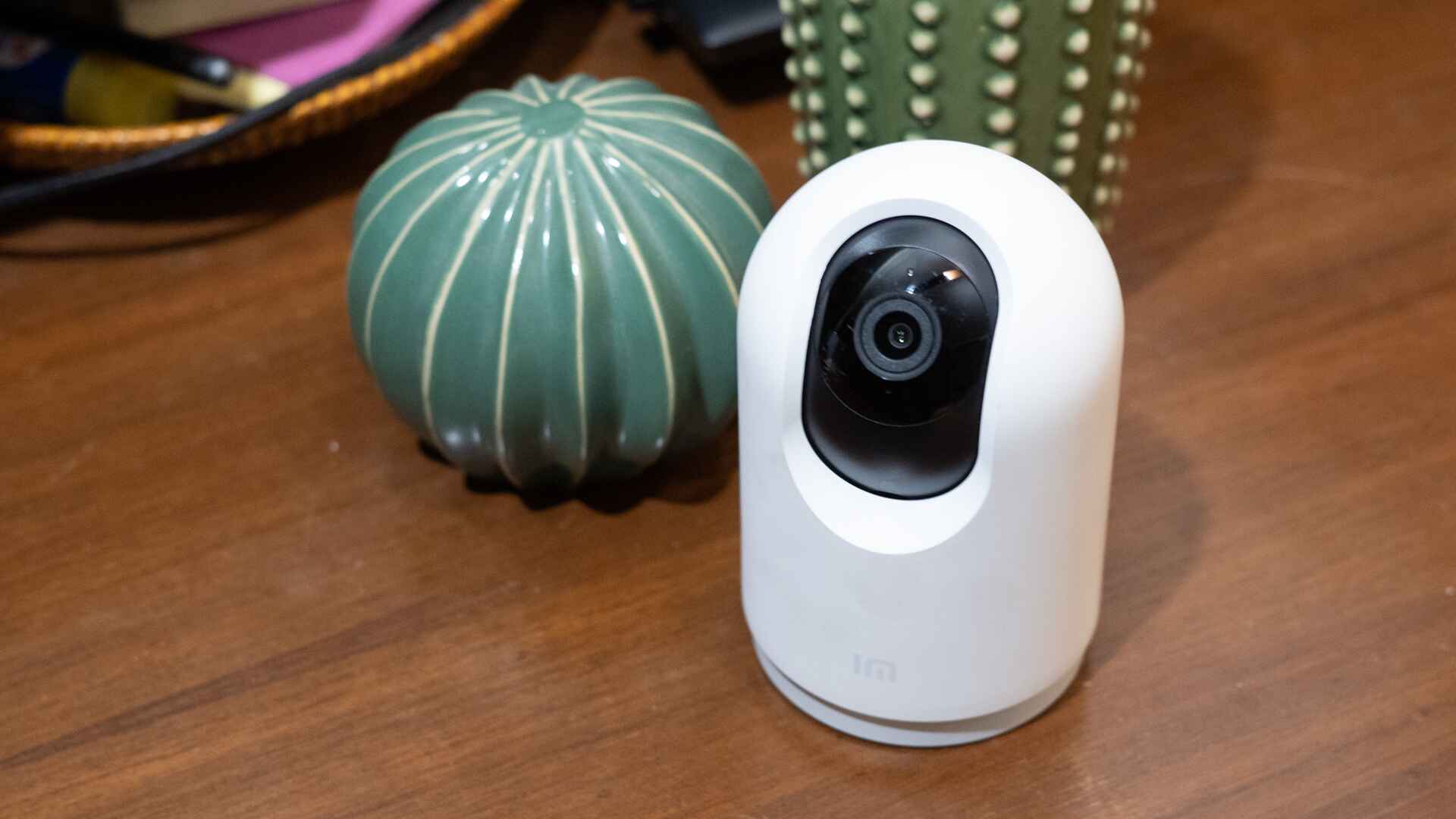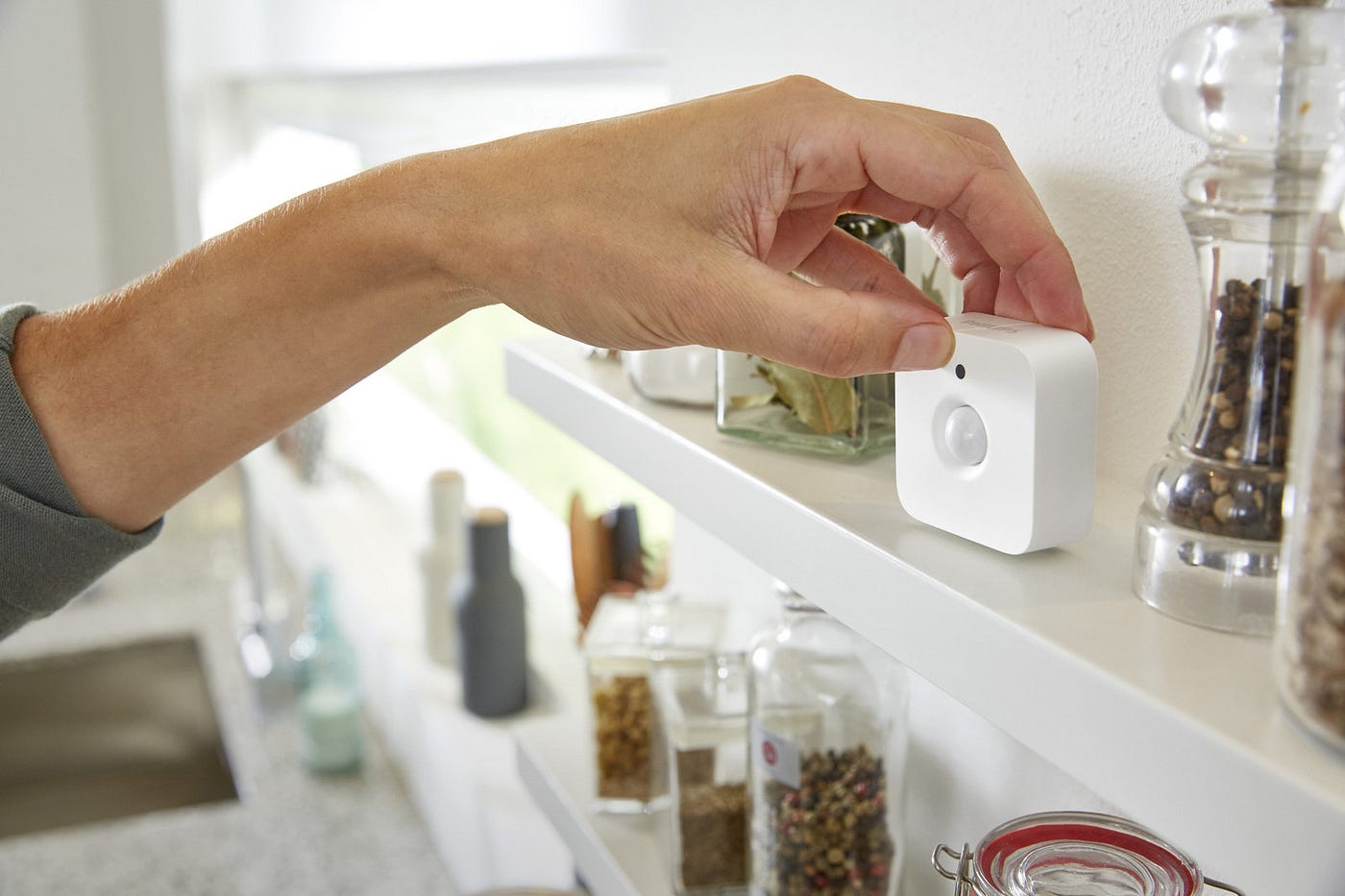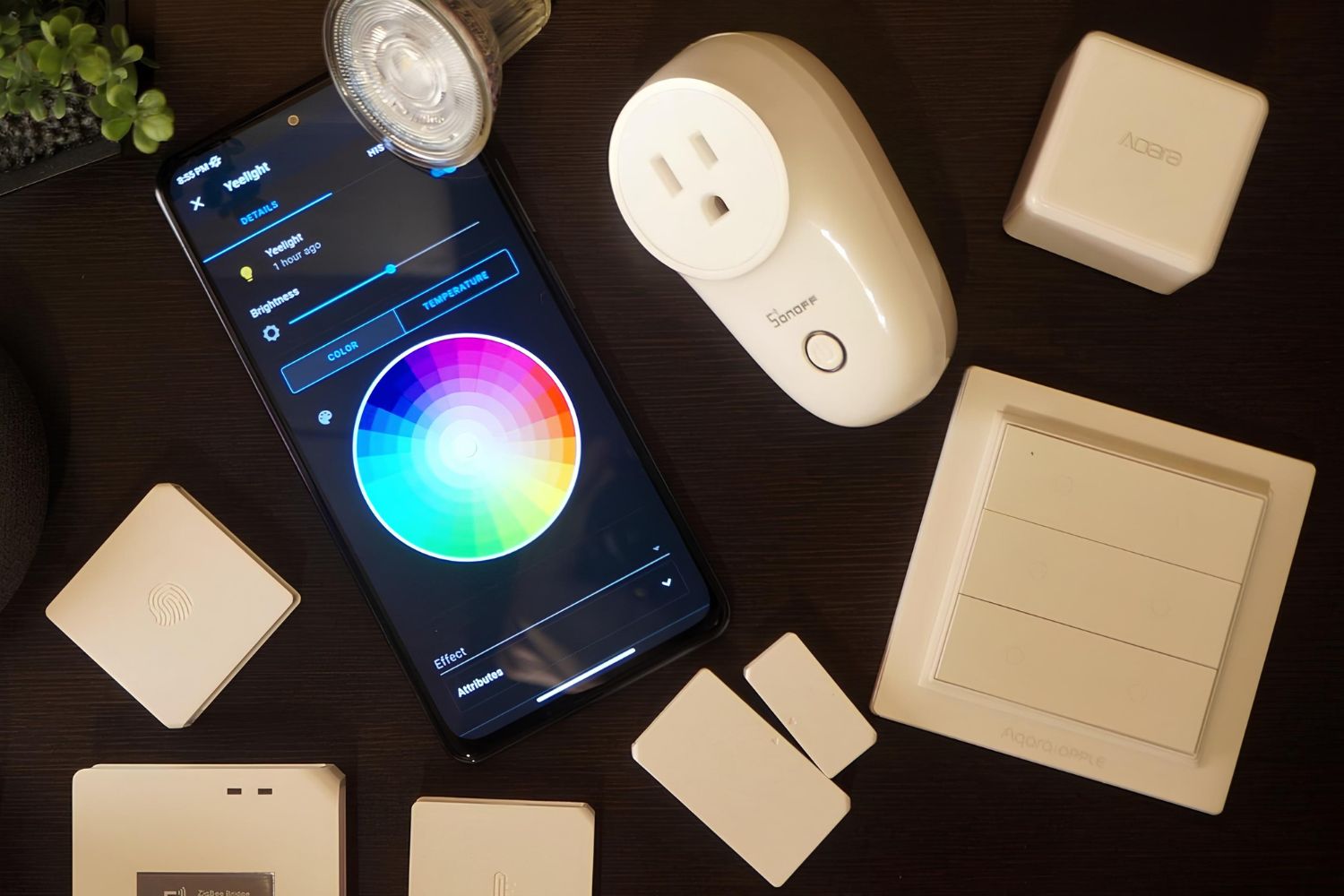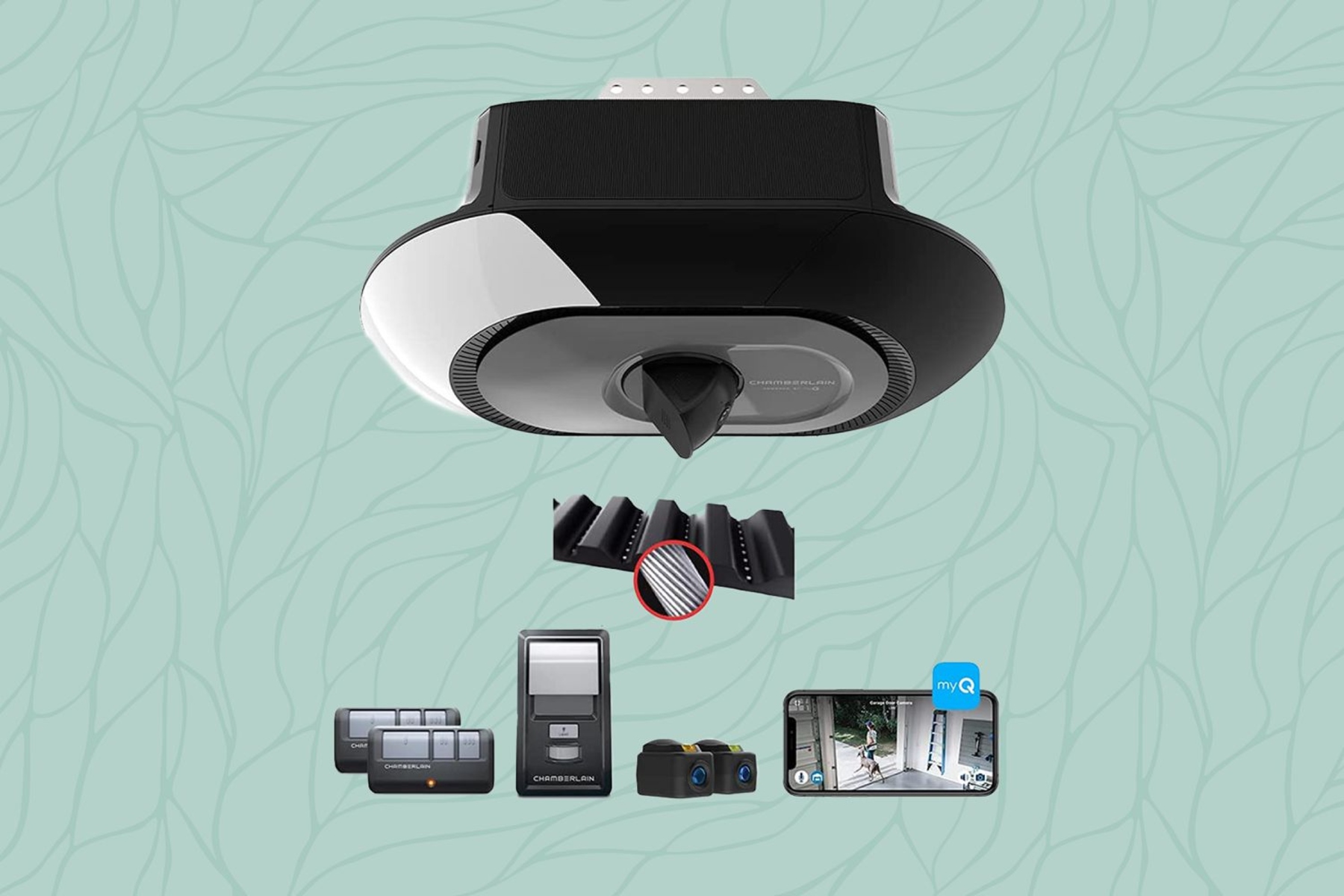Introduction
In today's fast-paced world, technology continues to revolutionize the way we interact with our surroundings. One such innovation is the use of smart devices to automate and enhance various aspects of our daily lives. Among these devices, the Xiaomi Door Sensor stands out as a versatile tool that can be utilized for a multitude of purposes, including automating lighting within our homes.
The Xiaomi Door Sensor is a compact and efficient device that detects the opening and closing of doors or windows. It operates on the Zigbee protocol, allowing seamless integration with a wide range of smart home ecosystems. This sensor is a key component in creating a smart and interconnected environment, where everyday tasks can be streamlined and optimized for convenience.
By leveraging the capabilities of the Xiaomi Door Sensor, homeowners can transform their living spaces into intelligent, responsive environments. Through the seamless integration of this sensor with smart lighting systems, such as Philips Hue or LIFX, users can achieve a hands-free approach to illuminating their homes. This not only enhances convenience but also contributes to energy efficiency and overall comfort.
In this comprehensive guide, we will delve into the process of setting up the Xiaomi Door Sensor and explore the various ways it can be utilized to automate lighting within a home environment. From the initial installation to troubleshooting and optimization, this article aims to provide a detailed and insightful resource for individuals looking to harness the potential of smart technology in their living spaces.
As we embark on this journey, it's important to keep in mind the transformative impact that smart devices can have on our daily routines. By embracing the possibilities offered by the Xiaomi Door Sensor, we open the door to a more streamlined, efficient, and enjoyable living experience. Let's explore the exciting realm of smart home automation and discover the endless possibilities that await us.
Components Needed
To embark on the journey of automating lighting with the Xiaomi Door Sensor, it's essential to gather the necessary components to ensure a seamless setup. The following items are crucial for creating a functional and efficient smart lighting system:
-
Xiaomi Door Sensor: This compact and versatile device serves as the cornerstone of the automation process. It detects the opening and closing of doors or windows, triggering the connected smart lighting system to illuminate or dim as needed.
-
Smart Lighting System: To complement the Xiaomi Door Sensor, a compatible smart lighting system is required. Popular options include Philips Hue, LIFX, or other Zigbee-enabled smart bulbs. These lighting systems offer a wide range of customizable features, allowing users to create personalized lighting scenarios based on the sensor's input.
-
Smart Hub or Bridge: In order to integrate the Xiaomi Door Sensor and the smart lighting system, a smart hub or bridge is essential. This hub acts as the central communication point, enabling seamless connectivity between the sensor, lighting system, and other smart devices within the home.
-
Mobile Device: A smartphone or tablet is necessary for configuring and managing the Xiaomi Door Sensor and the associated smart lighting system. The accompanying mobile app allows users to set up automation routines, adjust lighting settings, and monitor the status of the sensor and connected devices.
-
Mounting Accessories: Depending on the installation location of the Xiaomi Door Sensor, mounting accessories such as adhesive strips or screws may be required to securely affix the sensor to the door or window frame.
-
Power Source: If the chosen smart lighting system requires a separate power source, such as a smart plug or dedicated power adapter, it should be included in the setup to ensure uninterrupted functionality.
By assembling these essential components, users can lay the foundation for a sophisticated and responsive smart lighting setup. Each element plays a crucial role in creating a cohesive ecosystem where the Xiaomi Door Sensor seamlessly interacts with the smart lighting system, resulting in a harmonious blend of convenience and efficiency within the home environment.
Setting Up the Xiaomi Door Sensor
Setting up the Xiaomi Door Sensor is a straightforward process that begins with ensuring that all the necessary components are readily available. Once the sensor, smart lighting system, smart hub or bridge, mobile device, mounting accessories, and power source are at hand, users can proceed with the following steps to seamlessly integrate the sensor into their smart home ecosystem.
-
Selecting the Installation Location: Before commencing the setup, it's essential to identify the optimal location for mounting the Xiaomi Door Sensor. Typically, the sensor is affixed to the door or window frame, ensuring that it can accurately detect the opening and closing of the entryway. The chosen location should facilitate unobstructed communication between the sensor and the smart hub or bridge.
-
Preparing the Sensor: Depending on the mounting method, users can utilize the included adhesive strips or screws to securely attach the Xiaomi Door Sensor to the selected location. It's crucial to ensure that the sensor is firmly affixed and aligned to guarantee precise detection of door or window movements.
-
Pairing with the Smart Hub: With the sensor in place, the next step involves pairing it with the smart hub or bridge. This process may vary depending on the specific smart home ecosystem being used. Typically, users can initiate the pairing mode on the sensor and follow the instructions provided by the accompanying mobile app to establish a seamless connection with the smart hub.
-
Configuring Sensor Settings: Once the Xiaomi Door Sensor is successfully paired with the smart hub, users can access the settings within the mobile app to customize the sensor's behavior. This includes specifying the actions to be triggered when the sensor detects the opening or closing of the door or window. Users can define lighting scenarios, set timers, and create automation routines tailored to their preferences.
-
Testing Functionality: After configuring the sensor settings, it's essential to conduct thorough testing to ensure that the sensor accurately detects door or window movements and triggers the desired actions within the smart lighting system. This step allows users to fine-tune the sensor's sensitivity and verify the seamless integration between the sensor and the lighting system.
By following these steps, users can effectively set up the Xiaomi Door Sensor and lay the groundwork for automating lighting within their living spaces. The seamless integration of the sensor with the smart lighting system paves the way for a more intuitive and responsive home environment, where lighting adjustments are effortlessly synchronized with everyday activities.
Automating Lighting with the Xiaomi Door Sensor
Automating lighting with the Xiaomi Door Sensor introduces a new level of convenience and efficiency to the home environment. By leveraging the sensor's ability to detect door or window movements, users can seamlessly integrate their smart lighting system to respond to these actions. This creates a dynamic and responsive lighting experience that adapts to the occupants' needs and enhances the overall ambiance of the living space.
Once the Xiaomi Door Sensor is successfully set up and paired with the smart hub or bridge, users can explore various automation possibilities to optimize their lighting environment. The following are key considerations and strategies for automating lighting with the Xiaomi Door Sensor:
1. Entryway Illumination
Upon detecting the opening of a door, the Xiaomi Door Sensor can trigger the smart lighting system to illuminate the entryway, providing a welcoming and well-lit environment for occupants and visitors. This not only enhances safety and convenience but also adds a touch of sophistication to the home's entrance.
2. Pathway Lighting
In addition to the entryway, the sensor's detection of door movements can prompt the smart lighting system to adjust the illumination along pathways or corridors. This ensures that occupants can move through the space comfortably and safely, without the need to manually operate light switches.
3. Energy Efficiency
By automating lighting with the Xiaomi Door Sensor, users can optimize energy usage by ensuring that lights are only activated when needed. When a door is closed, the sensor can signal the smart lighting system to dim or turn off the lights, contributing to energy savings and environmental sustainability.
4. Customized Lighting Scenarios
The sensor's capabilities extend beyond basic on/off functionality, allowing users to create customized lighting scenarios based on specific door movements. For example, the sensor can be programmed to trigger different lighting intensities or colors for various entryways, adding a personalized touch to the home environment.
5. Security Enhancement
Automated lighting can serve as a deterrent to potential intruders by creating the illusion of occupancy, especially when occupants are away. The Xiaomi Door Sensor can play a pivotal role in activating and controlling the smart lighting system to simulate presence, enhancing the home's security measures.
By implementing these automation strategies, users can transform their living spaces into intelligent and adaptive environments where lighting seamlessly aligns with daily activities and enhances the overall living experience. The integration of the Xiaomi Door Sensor with the smart lighting system represents a significant step towards creating a more intuitive, efficient, and personalized home environment.
This automation not only simplifies everyday tasks but also contributes to energy conservation and security, underscoring the transformative potential of smart home technology. As users embrace the possibilities offered by the Xiaomi Door Sensor, they open the door to a more streamlined, efficient, and enjoyable living experience.
Troubleshooting and Tips
When integrating the Xiaomi Door Sensor with a smart lighting system, users may encounter occasional challenges or seek optimization tips to ensure a seamless and reliable automation experience. Here are some troubleshooting strategies and valuable tips to address common issues and enhance the functionality of the sensor and connected lighting system:
1. Signal Interference
In some cases, signal interference may affect the communication between the Xiaomi Door Sensor and the smart hub or bridge, leading to inconsistent performance. To mitigate this issue, users can relocate the smart hub or bridge to a central location within the home, minimizing potential obstructions and enhancing signal coverage.
2. Sensor Sensitivity Adjustment
If the sensor triggers lighting actions inconsistently or with delays, adjusting the sensor's sensitivity settings within the accompanying mobile app can help optimize its performance. Fine-tuning the sensitivity ensures accurate detection of door or window movements, resulting in precise and timely lighting automation.
3. Battery Maintenance
The Xiaomi Door Sensor operates on batteries, and periodic battery maintenance is essential to ensure uninterrupted functionality. Users should monitor the battery level through the mobile app and replace the batteries promptly when low. Additionally, ensuring the battery contacts are clean and free from corrosion can prevent connectivity issues.
4. Firmware Updates
Regularly checking for firmware updates for the Xiaomi Door Sensor and the connected smart hub or bridge is crucial for maintaining compatibility and addressing potential software-related issues. Keeping the devices updated with the latest firmware versions can resolve performance issues and introduce new features and optimizations.
5. Lighting System Compatibility
When integrating the Xiaomi Door Sensor with a smart lighting system, it's important to verify compatibility and ensure that the lighting system supports seamless integration with the sensor. Checking for firmware updates and compatibility information from the lighting system manufacturer can help address any compatibility-related challenges.
6. Optimal Mounting Position
Ensuring that the Xiaomi Door Sensor is mounted securely and in an optimal position is essential for reliable performance. Users should verify that the sensor is aligned correctly and affixed firmly to the door or window frame, minimizing the risk of false detections or signal disruptions.
By implementing these troubleshooting strategies and tips, users can overcome common challenges and optimize the functionality of the Xiaomi Door Sensor and the connected smart lighting system. These proactive measures contribute to a more robust and reliable smart home automation experience, ensuring that lighting adjustments seamlessly align with door or window movements, enhancing convenience and efficiency within the home environment.
Conclusion
In conclusion, the integration of the Xiaomi Door Sensor with a smart lighting system represents a significant leap towards creating a more intuitive, efficient, and personalized home environment. By harnessing the capabilities of this compact yet powerful sensor, users can seamlessly automate lighting based on door or window movements, enhancing convenience, energy efficiency, and overall living experience.
The journey of setting up the Xiaomi Door Sensor and pairing it with a compatible smart lighting system opens the door to a myriad of possibilities for creating dynamic and responsive lighting scenarios. From illuminating entryways and pathways to customizing lighting intensities and colors, the sensor's seamless integration with the smart lighting system empowers users to tailor their home environment to their preferences effortlessly.
Moreover, the automation facilitated by the Xiaomi Door Sensor contributes to energy conservation by ensuring that lights are only activated when needed, thereby reducing unnecessary energy consumption. This not only aligns with sustainable practices but also translates into tangible cost savings for homeowners.
The security aspect of automated lighting cannot be overlooked, as the sensor plays a pivotal role in enhancing home security measures by simulating occupancy through controlled lighting, thereby deterring potential intruders and bolstering peace of mind for occupants.
As users navigate the realm of smart home automation, troubleshooting and optimization tips serve as valuable resources for addressing challenges and maximizing the functionality of the Xiaomi Door Sensor and the connected smart lighting system. By proactively addressing signal interference, fine-tuning sensor sensitivity, and ensuring firmware updates, users can maintain a robust and reliable automation experience.
In essence, the Xiaomi Door Sensor serves as a catalyst for transforming living spaces into intelligent and adaptive environments, where lighting seamlessly aligns with daily activities and enhances the overall ambiance. The fusion of technology and everyday living culminates in a harmonious blend of convenience, efficiency, and personalized control, redefining the way we interact with our homes.
As we embrace the transformative potential of the Xiaomi Door Sensor and smart lighting integration, we embark on a journey towards a more streamlined, efficient, and enjoyable living experience. The possibilities are endless, and the impact is profound, as we unlock the door to a future where our living spaces respond and adapt to our needs seamlessly.









